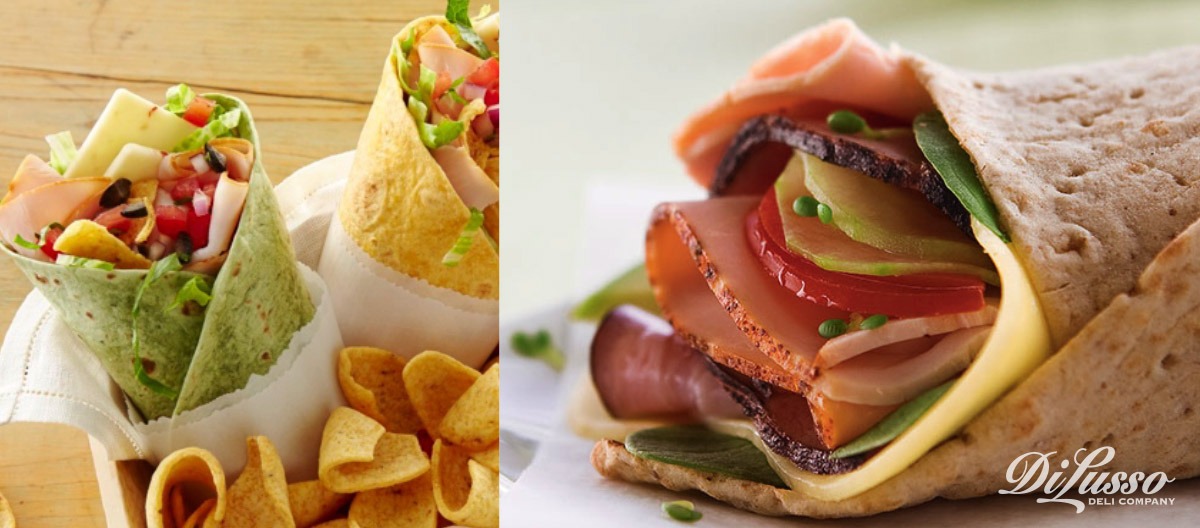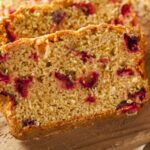Imagine vibrant, flavorful wraps bursting with fresh ingredients, meticulously crafted to satisfy your taste buds without compromising your health. This isn’t a compromise; it’s a culinary adventure. We delve into the delicious world of diabetic-friendly wraps, exploring creative recipes that showcase the exciting possibilities of low-carb alternatives and flavor-enhancing techniques. Forget bland, restrictive diets – prepare to tantalize your senses with wraps that are both healthy and incredibly satisfying.
This guide provides a comprehensive exploration of creating delicious and nutritious diabetic-friendly wraps. We’ll cover everything from selecting low-carb wrap bases like lettuce cups or portobello mushrooms to mastering flavor-boosting techniques using herbs, spices, and flavorful sauces. We’ll also offer three unique wrap recipes – Mediterranean, Mexican, and Asian-inspired – complete with nutritional information and step-by-step instructions. Learn how to plan your meals effectively, control portions, and store your creations to maximize flavor and nutritional value. Get ready to revolutionize your approach to healthy eating!
Flavor Enhancement Techniques
Unlocking the vibrant taste potential of diabetic-friendly wraps hinges on strategic flavor enhancement, bypassing the need for added sugars or unhealthy fats. By skillfully employing herbs, spices, and flavorful sauces, you can create wraps that are both delicious and health-conscious. This section explores effective techniques to achieve this balance.
The key lies in layering flavors to create a complex and satisfying taste experience. Instead of relying on sweetness for appeal, we build flavor profiles using aromatic herbs, pungent spices, and tangy sauces, each contributing its unique character to the overall taste. This approach ensures that your wraps are not only diabetic-friendly but also incredibly flavorful.
Savory Flavor Profiles
Savory flavors form the backbone of many delicious and satisfying wraps. The use of herbs and spices can transform a simple wrap into a culinary delight. These ingredients add depth and complexity without relying on sugar or unhealthy fats.
- Herbs: Fresh herbs like cilantro, parsley, dill, and chives provide a bright, herbaceous note. Imagine the vibrant green of the cilantro contrasting with the deep green of the spinach in your wrap, adding a refreshing burst of flavor with each bite. The delicate flavor of dill adds a subtle complexity, while parsley contributes a fresh, slightly peppery taste.
- Spices: Spices like cumin, coriander, smoked paprika, and garlic powder offer earthy and warm undertones. Cumin’s warm, slightly bitter notes add a depth of flavor that pairs beautifully with many vegetables and proteins. The earthy tones of coriander complement the savory flavors of meats and beans. Smoked paprika provides a smoky depth, while garlic powder adds a familiar, pungent aroma and taste.
- Sauces: Mustard (Dijon or whole grain), salsa (low-sodium), and pesto (made with minimal olive oil) add tang and zest. The creamy texture and sharp bite of Dijon mustard cuts through richness, adding a lively contrast. Low-sodium salsa brings a vibrant burst of fresh tomato and spice. Homemade pesto, using a small amount of healthy fats, can add a unique, herby flavor.
Sweet and Savory Flavor Combinations
While avoiding added sugars, subtle sweetness can be incorporated to create a balanced flavor profile. The trick lies in using naturally sweet ingredients and balancing them with savory elements.
- Naturally Sweet Ingredients: Unsweetened applesauce, a hint of cinnamon, or a touch of maple syrup (used sparingly) can add a delicate sweetness. The gentle sweetness of unsweetened applesauce adds moisture and a subtle fruity note without significantly impacting blood sugar levels. A dash of cinnamon offers warmth and complements many savory flavors. A tiny amount of maple syrup can add a touch of sweetness, but should be used judiciously.
- Balancing Savory Elements: Combine these subtle sweet notes with savory herbs and spices like rosemary, thyme, or a touch of nutmeg. The earthy, slightly piney flavor of rosemary contrasts beautifully with the sweetness. Thyme adds a more herbaceous, slightly lemony note, while nutmeg offers a warm, slightly sweet spice.
Spicy Flavor Profiles
For those who enjoy a kick, incorporating spice can add excitement without relying on unhealthy fats or added sugars.
- Spices: Chili powder, cayenne pepper, chipotle powder, and ginger add heat and complexity. Chili powder provides a mild to medium heat, while cayenne pepper offers a potent, fiery kick. Chipotle powder imparts a smoky heat, while ginger adds a warm, pungent zing.
- Sauces: Hot sauce (look for low-sodium options), sriracha (use sparingly), or a dash of freshly grated horseradish offer a fiery punch. Hot sauces offer a wide range of heat levels and flavor profiles, so choose one that suits your preference. Sriracha, with its unique blend of chili peppers and garlic, provides a delicious savory heat. Horseradish adds a sharp, pungent bite.
Meal Planning and Portion Control

Mastering meal planning and portion control is crucial for managing blood sugar levels effectively while enjoying delicious diabetic-friendly wraps. A well-structured plan ensures balanced macronutrient intake, preventing blood sugar spikes and crashes. Careful portioning allows you to savor your meals without exceeding your daily caloric needs.
Precise portion sizes are key to preventing blood sugar fluctuations. Individual caloric requirements vary based on factors such as age, activity level, and overall health. A registered dietitian or certified diabetes educator can help determine your personalized caloric needs and create a tailored meal plan. They can also provide guidance on appropriate carbohydrate, protein, and fat ratios to optimize your blood sugar management.
A Sample Weekly Meal Plan
This sample plan incorporates our diabetic-friendly wraps, aiming for a balanced intake of carbohydrates, proteins, and healthy fats. Remember to adjust portion sizes based on your individual needs and consult with a healthcare professional for personalized guidance.
| Day | Breakfast | Lunch | Dinner | Snack |
|---|---|---|---|---|
| Monday | 1/2 cup Greek yogurt with berries and a sprinkle of nuts, 1 diabetic-friendly wrap with hummus and vegetables | Large salad with grilled chicken or fish, 1/2 cup of quinoa | Baked salmon with asparagus and a small portion of brown rice, 1 diabetic-friendly wrap filled with leftover salmon and vegetables | Small handful of almonds |
| Tuesday | Oatmeal (1/2 cup dry) with a sprinkle of cinnamon and a few berries, 1 diabetic-friendly wrap with lean turkey and avocado | Leftover salmon and asparagus | Chicken stir-fry with plenty of vegetables and a small portion of brown rice | 1/4 cup cottage cheese |
| Wednesday | Scrambled eggs (2) with spinach and a slice of whole-wheat toast, 1 diabetic-friendly wrap with egg salad and lettuce | Lentil soup (1.5 cups) with a side salad | Lean ground beef and vegetable skillet with a small sweet potato | Apple slices with 2 tablespoons peanut butter |
| Thursday | Smoothie with protein powder, spinach, berries, and almond milk, 1 diabetic-friendly wrap with leftover ground beef and vegetables | Large salad with chickpeas and feta cheese | Turkey meatballs with zucchini noodles | Small orange |
| Friday | Greek yogurt with berries and a sprinkle of chia seeds, 1 diabetic-friendly wrap with hummus and cucumber | Leftover turkey meatballs and zucchini noodles | Baked chicken breast with roasted broccoli and a small portion of brown rice | Handful of mixed nuts |
| Saturday | Whole-wheat pancakes (2 small) with berries and a dollop of Greek yogurt, 1 diabetic-friendly wrap with avocado and tomato | Tuna salad sandwich on whole-wheat bread (small sandwich) with a side salad | Pizza with whole-wheat crust, lots of vegetables, and a small amount of low-fat cheese | Air-popped popcorn (small bowl) |
| Sunday | Breakfast burrito with scrambled eggs, black beans, salsa, and a small whole-wheat tortilla, 1 diabetic-friendly wrap with leftover pizza | Leftover pizza | Roast chicken with sweet potato and green beans | Small bowl of berries |
Adjusting Portion Sizes
Visual cues can aid in portion control. Imagine a deck of cards – a 3-ounce serving of meat is about the size of a deck of cards. A 1/2 cup of vegetables is roughly the size of your fist. Using smaller plates and bowls can also create the illusion of a larger portion. For instance, a serving of chicken breast could be visually more satisfying on a smaller plate, even if the quantity remains the same. This psychological effect can contribute to feeling fuller with less food.
Storing and Reheating Wraps
Proper storage is vital for preserving both the flavor and nutritional value of your wraps. Store leftover wraps in airtight containers in the refrigerator for up to 3-4 days. To reheat, gently microwave for 30-60 seconds, or until heated through. Avoid over-microwaving, which can make the wraps soggy and less appealing. Alternatively, you can reheat the wraps in a skillet over medium-low heat for a crispier texture. This method also helps to retain more of the wrap’s original flavor and visual appeal. A perfectly reheated wrap should be warm, pliable, and maintain its vibrant colors.
Step-by-Step Recipe Creation
This recipe focuses on creating a flavorful and diabetic-friendly chicken and vegetable wrap, emphasizing low-carb ingredients and portion control to manage blood sugar levels effectively. The vibrant colors and fresh ingredients will make this a visually appealing and satisfying meal.
Chicken & Veggie Wrap Ingredients
The following ingredients are essential for creating a delicious and healthy chicken and vegetable wrap. Careful selection of low-carb vegetables and lean protein sources is key to maintaining a balanced blood sugar level.
- 4 oz grilled chicken breast, diced into 1/2-inch cubes. Imagine the chicken, a pale golden color, glistening slightly from the residual heat of the grill.
- 1/2 cup chopped romaine lettuce, its crisp, dark green leaves providing a refreshing crunch.
- 1/4 cup thinly sliced red bell pepper, its vibrant crimson adding a touch of sweetness and color.
- 1/4 cup thinly sliced green bell pepper, its bright green offering a contrasting hue and mild flavor.
- 1/4 cup shredded carrots, their bright orange adding a pop of color and a slightly sweet crunch.
- 2 tablespoons light vinaigrette dressing, its tangy flavor cutting through the richness of the chicken.
- 2 large low-carb tortillas (e.g., made from almond flour or coconut flour), their slightly nutty aroma hinting at the deliciousness to come. They should be pliable and easily rolled.
Chicken & Veggie Wrap Preparation Steps
This step-by-step guide will ensure a perfectly prepared and visually appealing chicken and vegetable wrap. Each step is designed to maximize flavor and minimize carbohydrate intake.
- Prepare the chicken: Dice the 4 oz grilled chicken breast into 1/2-inch cubes. The chicken should be a pale golden color after being sauteed or grilled, with visible grill marks adding texture and visual appeal.
- Prepare the vegetables: Thinly slice the red and green bell peppers into strips. The peppers should be brightly colored and crisp. Shred the carrots using a grater or food processor. The carrots should be a vibrant orange and have a consistent shred size.
- Assemble the wrap: Lay out a low-carb tortilla on a clean surface. The tortilla should be flat and even. Spread a tablespoon of light vinaigrette dressing evenly across the tortilla. The dressing should be a light, translucent consistency.
- Add the filling: Layer the diced chicken evenly across the center of the tortilla. The chicken should be neatly arranged and not overcrowded. Top with the romaine lettuce, followed by the sliced bell peppers and shredded carrots. The vegetables should be arranged in a visually appealing manner, creating a colorful and textured layer.
- Roll the wrap: Carefully fold the sides of the tortilla inwards, then tightly roll the wrap from the bottom up, creating a neat cylinder. The wrap should be firmly rolled to prevent the filling from spilling out. The finished wrap should be visually appealing and tightly sealed.
- Serve and enjoy: Slice the wrap in half diagonally and serve immediately. The finished wrap should be visually appealing, with the colorful vegetables peeking through the slightly translucent tortilla.
Unlocking a world of flavor doesn’t mean sacrificing health. This exploration of diabetic-friendly wraps has showcased the incredible versatility of low-carb ingredients and the power of flavor-enhancing techniques. From the vibrant colors of a Mediterranean wrap to the zesty kick of a Mexican creation, each recipe offers a unique culinary experience. By mastering portion control and meal planning, you can enjoy these delicious wraps as part of a balanced, blood-sugar-friendly diet. So, embrace the creativity, experiment with flavors, and savor the joy of healthy, delicious eating!
FAQ Section
Can I freeze diabetic-friendly wraps?
Yes, many diabetic-friendly wraps freeze well. Wrap them individually in plastic wrap and then place them in a freezer-safe bag or container. Reheat gently in a microwave or oven.
What are some good substitutes for tortillas?
Great alternatives include large lettuce leaves, collard greens, portobello mushroom caps, or even thinly sliced zucchini or eggplant.
How can I make sure my wraps are low in sodium?
Use low-sodium or no-salt-added ingredients. Season generously with herbs and spices instead of relying on salty sauces.
Are all vegetables suitable for diabetic-friendly wraps?
While most vegetables are excellent choices, be mindful of carbohydrate content. Opt for non-starchy vegetables like leafy greens, peppers, and mushrooms.


